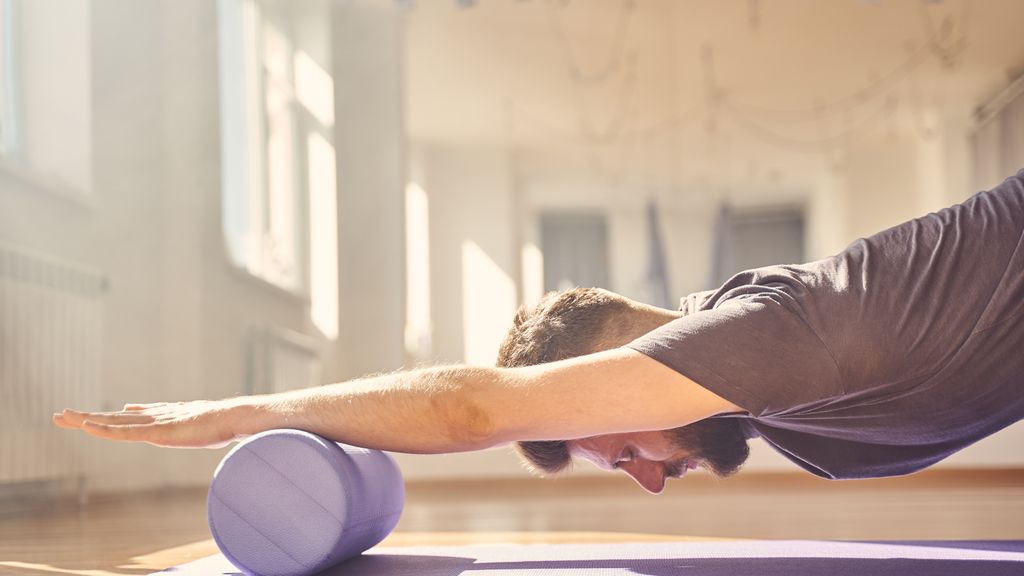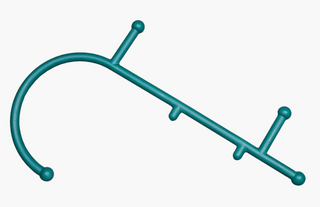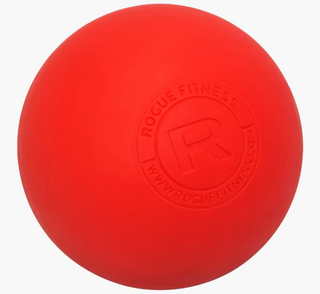
Mobility of the upper body is a crucial but undertrained aspect of fitness with significant implications for your quality of life. If we don't prioritize it, over time, our joints can feel creaky and painful, and we lose the ability to do daily activities and our favorite exercises.
Keep reading to learn the best exercises to improve your upper body mobility, flexibility, and performance, plus our favorite tools and essential safety tips.
The Basics of Upper Body Mobility
Your upper body consists of everything above your waist, including your abs, back, chest, arms, shoulders, and neck. It includes many joints, both mobile and fixed. It is very common for people to experience issues with their upper body mobility.
Mobility vs. Flexibility: What's the Difference?
While frequently confused, flexibility and mobility are not the same, and the difference matters.
Flexibility refers to the ability of a muscle to be temporarily and passively lengthened.
Mobility refers to a joint’s ability to actively move through its full range of motion.
Mobility is a more important concept in real life because when we run, jump, pull, push, or press, for instance, we rely on the active recruitment of our muscles to pull on our bones, assisted by tendons and ligaments to create movement.
We need our muscles to have some measure of flexibility but need equal parts joint mobility and muscle activation to get anywhere. Put another way, mobility = flexibility + strength + stability.
Our joints must be mobile, strong, and stable to prevent injury and enjoy healthy movement.
Get our fitness newsletter
Stay on track with your fitness goals and get inspired! Sign up for the GymBird newsletter for twice-monthly expert fitness and nutrition tips.
The Importance of Upper Body Mobility
You need adequate upper body mobility in your spine and shoulders to remain active and pain-free.
From daily chores like taking out the garbage and lifting a box on a high shelf, you need to be able to move through a full range of motion without restrictions in the gym and throughout your day. Unfortunately, many people experience pain and dysfunction in these joints as they age.
Benefits of Mobility
Mobility is the root of all movement, so its benefits are many. The shoulders, in particular, are an important focus because they are the most mobile joints in the body, so we want to fight to maintain easy and pain-free movement.
Other benefits of regular mobility exercises:
- Better movement patterns
- Improved coordination
- Reduced injury risk
- Greater independence as we age
Pain, Dysfunction, and Tears: My Experience with a Mobility Disorder
You wouldn't know it by looking at me, but I have struggled with joint pain and hypermobility my entire life.
I sprained my ankles hundreds of times throughout my childhood. These sprains were so frequent, I became a pro at navigating my elementary school on crutches, and my teachers had a protocol for assigning another student to carry my books.
I was an avid soccer player, and while ankle sprains were a fairly common injury in the sport, the rate at which I sustained them was alarming.
As I advanced into my teen years, the injuries just kept coming: dislocated patella, AC separation in my shoulder, which required steroidal injections, and finally–my ankle gave out for the last time and required surgery to repair at the ripe age of 16.
My orthopedic surgeon made it crystal clear that my soccer-playing days were behind me, but somehow, my injuries were not. Even though I gave up team sports, I developed horrible shoulder pain at age 19.
On the day I started physical therapy, I was in tears due to the pain, and my shoulder was so weak I couldn't pull open the door to the clinic. Chronic pain and disability are debilitating at any age, but not knowing what's wrong with you is incredibly distressing when you're young.
Eventually, I found out I have Hypermobility Spectrum Disorder (HSD). HSD is a condition where my joints and tissues have too much laxity. For some people, it's not a problem and doesn't require treatment. For me, it meant my joints became highly unstable and were the cause of constant pain and injury.
Over time, I learned the most critical treatment I had available was to build strong muscles and stable joints to help me move safely without pain. That's how mobility work became a necessity for me and a topic I'm passionate about educating others on.
Common Upper Body Mobility Concerns
There are many different causes and treatments for the dozens of injuries that can occur in the joints of the upper body that cause pain or dysfunction, so we will just cover the most common ones that affect mobility the most.
Pain
Musculoskeletal pain is a highly prevalent diagnosis for adults, and the most affected areas of the upper body involve the back and the shoulders.
Low back pain is especially common, and up to 80% of adults will experience a painful episode at some point in their lives. Worse still, for an unlucky 12%, that low back pain will become chronic.
Pain in the shoulder is also widespread and can be even more persistent. One study published in the BMC Musculoskeletal Disorders journal found that 50% of people who reported shoulder pain had it six months later.
Limited Range of Motion
When we experience pain, our body often naturally compensates by attempting to minimize it however possible. In the case of joint pain, our body often increases muscular stiffness, which limits our range of motion.
This can lead to a feedback loop of feeling pain and then feeling tight, significantly reducing the likelihood of us getting up and moving. Which can make the whole process worse.
Impingement
The anatomy of your shoulder is quite intricate, and many small moving parts must be in alignment for it to function correctly. Shoulder impingement happens when your rotator cuff muscles rub against your bone, causing inflammation and pain.
Impingement happens when the four muscles making up our rotator cuff are weaker than other muscles attaching to the shoulder.
While the mechanisms that cause these issues are varied and not completely understood, we know that by maintaining mobile joints, you will enjoy a higher quality of life and freer movement patterns. Better movement patterns also mean your daily tasks are more manageable, and you are more likely to get structured exercise regularly.
Stretching Exercises for Upper Body Mobility
By incorporating regular stretching during your exercise cool-down and throughout your day, you'll ensure your muscles don't get too tight. Too tight muscles can contribute to imbalances, postural deviations, and pain.
Neck and Shoulder Stretches
Chin Tucks, Trapezius Stretch (Ear to shoulder) Levator Scapulae Stretch (Ear to underarm), Assisted Cervical Rotations
Deltoid Stretch
Arm and Wrist Stretches
Tricep Stretch
Wrist Flexor Stretch
Quadruped Wrist Extension
Back and Spine Stretches
Downward Dog
Child's Pose
Lying Piriformis Stretch
Seated Spinal Twist
Chest Stretches
Door Frame Pec Stretch
Physio Ball Walk Out
Behind Back Arm Pull
Upper Body Mobility Exercises
Mobility exercises are dynamic and best included in your warm-up before structured exercise. They are also great anytime throughout the day and help you shake off tightness or achiness.
Neck and Shoulder Mobility Exercises
Arm Circles
Shoulder Pass Throughs
Prone Lift Offs
Behind the Back Opener
Arm and Wrist Mobility Exercises
Wrist Rolls
Sun Salute
Back and Spine Mobility Exercises
Cat-Cow
Thoracic Spine Twist
Quadruped Thoracic Opener
Lying Knee to Chest
Chest Mobility Exercises
Front Arm Swings
Shoulder Pass Throughs
Tools and Equipment for Mobility
You certainly don't need to buy any of these tools to create an effective mobility routine, but they can be helpful.
Mobility Hook/Cane/Tool
While it may look like a torture device, the mobility hook is a favorite of physical and massage therapists because the little balls, combined with its unique shape, allow for deep tissue massage in the hard-to-reach muscles of the neck and back, especially.
These canes are used to mobilize your back, neck, and hips in many ways. Check out your massage options here.
Thera Cane Massager
Best for mobility & recovery
The versatile and portable Thera Cane Massager is a simple mobility and recovery tool, featuring six massaging trigger point balls on one strategically angled device.
Get to hard to reach areas
Perfect for back pain relief
Made in the USA
Lacrosse Ball
Lacrosse balls are a mobility darling thanks to their utility, durability, and affordable price. These rubber balls come in all different shapes and sizes and are a portable and versatile tool you can use to self-massage sore muscles and to work out tender spots.
This option from Rogue Fitness is just $5. Check out this video for many mobility exercise options using a lacrosse ball.
Rogue Lacrosse Balls
Best for relieving muscle tension
If there’s one thing you should implement to increase mobility, it’s a lacrosse ball. It’s great for breaking up muscle knots and hard to reach trigger points. Use the Lacrosse ball on your traps and delts after a heavy upper body workout or on glutes and calves after a long run.
Perfect for focusing on knots
Great for muscle and back pain
Foam Roller
Foam rollers have become extremely popular thanks to their use in CrossFit. Foam rolling has been shown to temporarily increase the extensibility of your muscle tissues, which can increase your flexibility in the short term and be helpful when preparing for certain types of exercise.
While further evidence shows that foam rolling isn't essential, nor does it break up scar tissue, if it feels good and you enjoy it, you can certainly include it in your mobility training.
Rogue Foam Roller
Best for durability
As athletes, coaches, and trainers have long since come to understand, a quality foam roller can do far more than just ease a nagging muscle knot.
Two density options
Two length options
Made in America
Resistance Bands & Loops
Resistance bands or mini loops can be helpful during dynamic stretches and activation work, particularly before strength training. They are a cheap, portable option that can add variety to your mobility training.
Rogue Monster Bands
Best for customized resistance training
Available to order individually, in pairs, or as part of a full set, Rogue Monster Bands are the versatile, go-anywhere accessory for customized resistance training—from mobility work and pull-up assistance to banded squats and bench presses.
Various resistance levels and options
Workout anywhere
Highly versatile for any workout routine
Tips for Incorporating Mobility Into Your Routine
If you're experiencing pain or a reduced range of motion, consult your healthcare provider or physical therapist. It's important to get cleared for exercise and receive necessary medical treatments first.
Once you're cleared for exercise and understand the root cause of your mobility issue, you can start to incorporate a few daily stretches and exercises to address it.
Progress slowly, and let pain be your guide. Mobility work can be uncomfortable–especially if you're starting with a limited range of motion or impingement–but it should be tolerable.
Your physical therapist is the best resource for developing a routine to help you progress but not overdo it.
Consistent mobility work is crucial as we age because our sedentary lifestyles often lead to a limited range of motion in our joints, tight and weak muscles, and poor movement quality.
Work with an expert to identify any mobility issues and create a daily protocol to address them. If you don’t have any concerns, you can prevent them from developing by including upper body mobility drills regularly in your exercise warm-ups to keep your joints happy.
FAQS about Upper Body Mobility Exercises
What are the benefits of incorporating upper body mobility exercises into my fitness routine?
By improving your upper body mobility, you will enjoy better movement patterns and increased coordination, reducing the risk of injury and enjoy greater independence as you age.
What are some common mobility issues in the upper body?
Due to its significant mobility, the shoulder joint is the most common joint to be injured, and common issues include pain, reduced range of motion, and impingement.
How often should I include upper body mobility exercises in my workout routine?
How often you include mobility work depends on your goals, limitations, and symptoms. If you have pain or a shoulder injury that's been diagnosed and treated by a healthcare professional and you're cleared for exercise, first see if your provider would like you to see a physical therapist.
They are the experts in injury rehabilitation and a phenomenal resource for exercises that will address your individual symptoms.
If you are cleared for exercise or don't have medical issues but want to improve your mobility, start by including one to two mobility exercises in your exercise warm-up.
You can choose a bodyweight option or use very light resistance, such as bands, to take the joint through its full range of motion in a slow and controlled way for 15-20 reps.
Bottom Line
Mobility refers to a joint's ability to move through its full range of motion, and it's essential for healthy movement patterns. Mobility issues can arise when you have too much or too little range of motion or stability and can be treated with physical therapy and the right exercises.
Add a few mobility exercises to your next upper body workout, or incorporate a few stretches and drills throughout your workday.
More Mobility Advice from GymBird Experts
- The Importance of Mobility for a Better, More Flexible You
- Yoga for Mobility
- Top Hip Mobility Exercises
Resources
JAMA Network Open. Risk Factors Associated With Transition From Acute to Chronic Low Back Pain in US Patients Seeking Primary Care.
BMC Musculoskeletal Disorders. A systematic review of the global prevalence and incidence of shoulder pain.
Cleveland Clinic. Shoulder Impingement Syndrome.







